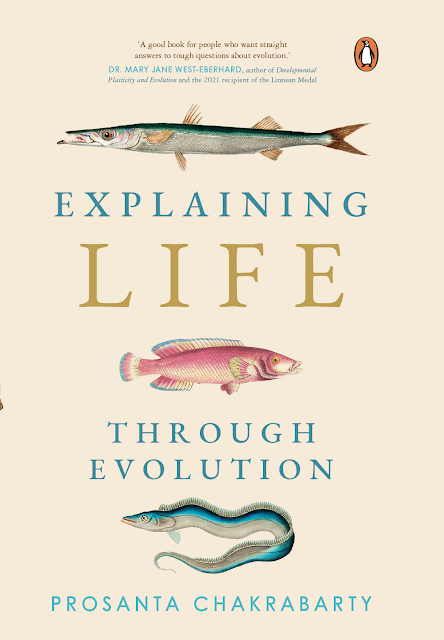663
For our second interview in our Meet the Author series, we spoke to Professor Prosanta Chakrabarty, the Curator of Fishes at Louisiana State University.
As an ichthyologist, Professor Chakrabarty studies fishes, especially bony ones to understand the evolution and history of the Earth. His research has taken him to over 30 countries and Chakrabarty is credited with the discovery of over 13 species of fish. His recent book, Explaining Life Through Evolution focuses on similarities between species, rather than the differences. He also states that life is like a book of which we see just a few chapters and it continues to be made, long after we are gone.
Image credit: Prosanta Chakrabarty
Coffee Table Science is grateful to Professor Chakrabarty for dedicating his valuable time to this interview.
CTS: Evolution is something that happens over millions of years. We live for a few decades. Why should we study evolution then?
Prosanta Chakrabarty (PC): Evolution can take thousands of years (at least macro-evolution) to vertebrates and other organisms with long generation times, but organisms like coronaviruses, the AIDS virus, and the flu evolve very quickly and in our lifetimes, so we better pay attention to evolution for our own survival.
Even after so many years of research, why is evolution still called a theory?
Evolution is called a theory because it is a descriptive explanation of how nature works, evolution isn’t a “theory” as in something equivalent to saying “we still question this idea”. A theory in terms of science is an umbrella idea that encompasses many time-tested hypotheses. “The theory of gravity” and the “theory of evolution” have the same strength in scientific parlance.
The Curator of Fishes at LSU. Image credit: Prosanta Chakrabarty
Where did the concept first come from that the species on the planet were evolving? What has been Darwin’s contribution and why is it so revered?
Evolutionary theory pre-dates Darwin. In the West many people thought organisms and the Earth itself were fixed – Plato for example. What Darwin provided was the best explanation for how groups of animals change over time and become new species i.e., natural selection.
Apart from Darwin’s contributions, which other scientific discoveries have helped us understand who we are, and where do we come from?
We’ve learned a lot since Darwin, he didn’t know about hormones or DNA. DNA especially helps us see how all life on Earth is connected and about how few changes it takes to go from a banana to a human – or at least to show common ancestry among all life on Earth.
There is still a great deal that we do not understand about our DNA, and what most of it does in our body. What are scientists doing today to unearth the secrets that are locked in this piece of code?
We actually know quite a bit about how you go from DNA to what makes you or a catfish or a panda. But there is much more to learn, with new tools like CRISPR that can manipulate and alter DNA very quickly we are in a new era of discovery of how changing the genotype (the DNA) can manipulate the phenotype (the body).
Over the past few years, DNA testing has exploded onto the scene. Do these tests help track evolutionary changes as well?
Even before DNA was used in ancestry tests for humans we were using it to build the Tree of Life to learn who is related to whom and to learn about the diversity of life on Earth and how it has changed over time.
Image credit: Prosanta Chakrabarty
Your work in this field has also been recognized globally. What attracted you to studying fish and not human evolution?
I wanted to study animals since I was a kid, I wasn’t so interested in humans, I loved nature. I started learning about evolution at university and found that fishes can help us understand our own anatomy and bodies and where we came from. I was inspired by ichthyologists who were my teachers and mentors in college and while doing undergrad research.
For those interested in understanding evolution better, what resources would you recommend?
Well, I recommend my new book, Explaining Life Through Evolution, which I hope explains evolution in a way that a textbook or video can’t.
I also recommend trying to read the scientific literature from journals like Evolution – it isn’t always easy to understand that primary literature but that is where we get the facts that help us understand evolution.




